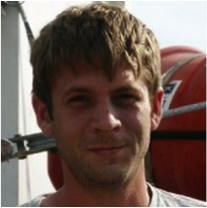Constructing a Surface Mooring

Associate Scientist
Woods Hole Oceanographic Institution
Woods Hole Oceanographic Institution
Dr. Farrar received his Ph.D. in Physical Oceanography from the MIT-WHOI Joint Program in Oceanography. His research interests include air-sea interaction and exchange; dynamics and thermodynamics of the upper ocean; tropical dynamics and equatorial waves; oceanic internal waves and eddies; satellite oceanography; and ocean observing and instrumentation.
Webinar Clip
Dr. Farrar was one of many scientists on-board the R/V Knorr in the fall of 2012 as it sailed from Woods Hole, Massachusetts to the Azores Islands in Portugal. Along the way, within the region of the SPURS study site in the North Atlantic, the science team deployed a surface mooring that would anchor to the seafloor and take continuous measurements for one year. In this clip, Dr. Farrar describes the success of that deployment along with the risks often associated with leaving a large piece of scientific equipment in the open ocean for a year. Learn how a mooring of that size is constructed and how scientists keep it anchored to one spot in over 3,000 meters of ocean water.Full webinar: Ocean Thinking: Balanced Budget? Oh, Buoy!
Click here for a transcript of this clip (PDF, 42.5 KB). |
Resources
Applicable Science Standards
 Planning and Carrying Out Investigations. Scientists and engineers plan and carry out investigations in the field or laboratory, working collaboratively as well as individually. Their investigations are systematic and require clarifying what counts as data and identifying variables or parameters.
Planning and Carrying Out Investigations. Scientists and engineers plan and carry out investigations in the field or laboratory, working collaboratively as well as individually. Their investigations are systematic and require clarifying what counts as data and identifying variables or parameters. Constructing Explanations and Designing Solutions. The goal of science is the construction of theories that provide explanatory accounts of the world. A theory becomes accepted when it has multiple lines of empirical evidence and greater explanatory power of phenomena than previous theories.
Constructing Explanations and Designing Solutions. The goal of science is the construction of theories that provide explanatory accounts of the world. A theory becomes accepted when it has multiple lines of empirical evidence and greater explanatory power of phenomena than previous theories. Obtaining, Evaluating, and Communicating Information. Scientists and engineers must be able to communicate clearly and persuasively the ideas and methods they generate. Critiquing and communicating ideas individually and in groups is a critical professional activity.
Obtaining, Evaluating, and Communicating Information. Scientists and engineers must be able to communicate clearly and persuasively the ideas and methods they generate. Critiquing and communicating ideas individually and in groups is a critical professional activity.